A Fractional Creep Model for Deep Coal Based on Conformable Derivative Considering Thermo-Mechanical Damage
Abstract
:1. Introduction
2. Definition of the Damaged Abel Dashpot and Damage Variable
2.1. The Damaged Abel Dashpot
2.2. Thermo-Mechanical Coupling Damage Variable
3. Creep Model Development
3.1. One-Dimensional Creep Constitutive Model
3.2. Triaxial Creep Constitutive Model
4. Model Validation and Analysis
4.1. Triaxial Creep Model Validation
4.2. Analysis of the Influence Mechanism of Creep Deformation
5. Conclusions
Author Contributions
Funding
Data Availability Statement
Acknowledgments
Conflicts of Interest
References
- Xie, H.P.; Xie, J.; Gao, M.Z.; Zhang, R.; Zhou, H.W.; Gao, F.; Zhang, Z.T. Theoretical and experimental validation of mining enhanced permeability for simultaneous exploitation of coal and gas. Environ. Earth Sci. 2015, 73, 5951–5962. [Google Scholar] [CrossRef]
- Noack, K. Control of gas emissions in underground coal mines. Int. J. Coal Geol. 1998, 35, 57–82. [Google Scholar] [CrossRef]
- Schoenball, M.; Sahara, D.P.; Kohl, T. Time-dependent brittle creep as a mechanism for time-delayed wellbore failure. Int. J. Rock Mech. Min. Sci. 2014, 70, 400–406. [Google Scholar] [CrossRef]
- Zhao, Y.; Lin, B.Q.; Liu, T.; Zheng, Y.N.; Kong, J.; Li, Q.Z.; Song, H.R. Flow field evolution during gas depletion considering creep deformation. J. Nat. Gas Sci. Eng. 2019, 65, 45–55. [Google Scholar] [CrossRef]
- Guo, Z.H.; Vu, P.N.H.; Hussain, F. A laboratory study of the effect of creep and fines migration on coal permeability during single-phase flow. Int. J. Coal Geol. 2018, 200, 61–76. [Google Scholar] [CrossRef]
- Danesh, N.N.; Chen, Z.W.; Connell, L.D.; Kizil, M.S.; Pan, Z.J.; Aminossadati, S.M. Characterization of creep in coal and its impact on permeability: An experimental study. Int. J. Coal Geol. 2017, 173, 200–211. [Google Scholar] [CrossRef]
- Danesh, N.N.; Chen, Z.W.; Aminossadati, S.M.; Kizil, M.S.; Pan, Z.J.; Connell, L.D. Impact of creep on the evolution of coal permeability and gas drainage performance. J. Nat. Gas Sci. Eng. 2016, 33, 469–482. [Google Scholar] [CrossRef]
- Zhang, L.; Li, X.C.; Ren, T. A theoretical and experimental study of stress–strain, creep and failure mechanisms of intact coal. Rock Mech. Rock Eng. 2020, 53, 5641–5658. [Google Scholar] [CrossRef]
- Cao, S.G.; Xian, X.F. Testing study on the characteristics of creep and damage of coal and other rocks. Chin. J. Rock Mech. Eng. 2001, 6, 817–821. [Google Scholar]
- Wang, D.K.; Liu, J.; Yin, G.Z.; Wei, X.J. Test study of creep properties of gas-bearing coal specimens under triaxial compression. Chin. J. Rock Mech. Eng. 2010, 29, 349–357. [Google Scholar]
- Wang, W.Z.; Yin, G.Z.; Wang, D.K.; Qin, H. A visco-elasto-plastic creep model of outburst prone coal under triaxial compression. J. Chongqing Univ. 2010, 33, 99–103. [Google Scholar]
- Yin, G.Z.; He, B.; Wang, H.; Zhang, X.M. Damage law of overlying rock induced by mining. J. China Coal Soc. 2015, 40, 1390–1395. [Google Scholar]
- Wang, D.K.; Yin, G.Z.; Zhang, D.M. Triaxial creep model and its stability analysis of gas-containing coal. J. Chongqing Univ. 2009, 32, 1316–1320. [Google Scholar]
- Qi, Y.J.; Jiang, Q.H.; WANG, Z.J.; Zhou, C.B. 3D Creep Constitutive Equation of modified Nishihara Model and Its Parameters Identification. Chin. J. Rock Mech. Eng. 2012, 31, 347–355. [Google Scholar]
- Cai, T.T.; Feng, Z.C.; Zhao, D.; Jiang, Y.L. A creep model for lean coal based on hardening-damage mechanism. Rock Soil Mech. 2018, 39, 61–68. [Google Scholar]
- Qu, L.N. A nonlinear Burgers model based on triaxial creep test of coal. J. Xi’Univ. Sci. Technol. 2019, 39, 985–991. [Google Scholar]
- Wu, F.; Chen, J.; Zou, Q.L. A nonlinear creep damage model for salt rock. Int. J. Damage Mech. 2019, 28, 758–771. [Google Scholar] [CrossRef]
- Zhou, F.X.; Wang, L.Y.; Liu, H.B. A fractional elasto-viscoplastic model for describing creep behavior of soft soil. Acta Geotech. 2021, 16, 67–76. [Google Scholar] [CrossRef]
- Zhou, H.W.; Wang, C.P.; Han, B.B.; Duan, Z.Q. A creep constitutive model for salt rock based on fractional derivatives. Int. J. Rock Mech. Min. Sci. 2011, 48, 116–121. [Google Scholar] [CrossRef]
- Kang, J.H.; Zhou, F.B.; Liu, C.; Liu, Y.K. A fractional non-linear creep model for coal considering damage effect and experimental validation. Int. J. Non-Linear Mech. 2015, 76, 20–28. [Google Scholar] [CrossRef]
- Wang, L.J.; Zhou, H.W.; Rong, T.L.; Ren, W.G. Research on experimental and nonlinear creep constitutive model of coal at depth. J. China Coal Soc. 2018, 43, 2196–2202. [Google Scholar]
- Cai, T.T. Experimental Investigation on the Rheology-Seepage Evolution Law of Coal by Thermal-Mechanical Coupling; Taiyuan University of Technology: Taiyuan, China, 2018. [Google Scholar]
- Xu, T.; Zhou, G.L.; Heap, M.J.; Zhu, W.C.; Chen, C.F.; Baud, P. The influence of temperature on time-dependent deformation and failure in granite: A mesoscale modeling approach. Rock Mech. Rock Eng. 2017, 50, 2345–2364. [Google Scholar] [CrossRef]
- Chen, L.; Wang, C.P.; Liu, J.F.; Liu, Y.M.; Liu, J.; Su, R.; Wang, J. A damage-mechanism-based creep model considering temperature effect in granite. Mech. Res. Commun. 2014, 56, 76–82. [Google Scholar] [CrossRef]
- Zuo, J.P.; Man, K.; Cao, H.; Yang, G.X.; Hu, C.P. Study on Constitutive Equation of Rock Rheological Model with Thermo-Mechanical Coupling Effects. Chin. J. Rock Mech. Eng. 2008, S1, 2610–2616. [Google Scholar]
- Xi, B.P.; Zhao, Y.S.; Wan, Z.J.; Zhao, J.C.; Wang, Y. Study of Constitutive Equation of Granite Rheological Model with Thermo-Mechanical Coupling Effects. Chin. J. Rock Mech. Eng. 2009, 28, 956–967. [Google Scholar]
- Xu, X.L.; Karakus, M. A coupled thermo-mechanical damage model for granite. Int. J. Rock Mech. Min. Sci. 2018, 103, 195–204. [Google Scholar] [CrossRef]
- Zhang, L.; Zhou, H.W.; Wang, X.Y.; Deng, T.F.; Chen, C.F.; Zhang, H.; Nagel, T. Modeling the visco-elastoplastic behavior of deep coal based on conformable derivative. Mech. Time-Depend. Mater. 2023, 1–21. [Google Scholar] [CrossRef]
- Zhou, H.W.; Su, T.; Deng, H.L.; Wang, R.; Zhao, J.W.; Sun, X.T.; An, L. Characterizing three-dimensional creep of Beishan granite by the variable-coefficient Abel dashpot. Mech. Time-Depend. Mater. 2021, 25, 85–100. [Google Scholar] [CrossRef]
- Khalil, R.; Al Horani, M.; Yousef, A.; Sababhehb, M. A new definition of fractional derivative. J. Comput. Appl. Math. 2014, 264, 65–70. [Google Scholar] [CrossRef]
- Wu, F.; Liu, J.F.; Wu, Z.D.; Bian, Y.; Zhou, Z.W. Fractional nonlinear creep constitutive model of salt rock. Rock Soil Mech. 2014, 35, 162–167. [Google Scholar]
- Xue, D.J.; Lu, L.L.; Yi, H.Y.; Wu, Z.D.; Zhang, Q.S.; Zhang, Z.P. A fractional Burgers model for uniaxial and triaxial creep of damaged salt-rock considering temperature and volume-stress. Chin. J. Rock Mech. Eng. 2021, 40, 315–329. [Google Scholar]
- Zhou, H.W.; Jia, W.H.; Xie, S.L.; Su, T.; Zhang, L.; Ma, B.W.; Hou, W. A statistical damage-based fractional creep model for Beishan granite. Mech. Time-Depend. Mater. 2022, 27, 163–183. [Google Scholar] [CrossRef]
- Hu, Q.Z.; Feng, X.T.; Zhou, H. Study of creep model of rock salt with thermal damage considered. Rock Soil Mech. 2009, 30, 2245–2248. [Google Scholar]
- Ding, J.Y.; Zhou, H.W.; Chen, Q.; Liu, D.; Liu, J.F. Characters of rheological damage and constitutive model of salt rock. Rock Soil Mech. 2015, 36, 769–776. [Google Scholar]
- Zhang, L.; Zhou, H.W.; Wang, X.Y.; Wang, L.; Su, T.; Wei, Q.; Deng, T.F. A triaxial creep model for deep coal considering temperature effect based on fractional derivative. Acta Geotech. 2021, 17, 1739–1751. [Google Scholar] [CrossRef]
- Nagel, T.; Minkley, W.; BÖttcher, N.; Naumov, D.; GÖrke, U.J.; Kolditz, O. Implicit numerical integration and consistent linearization of inelastic constitutive models of rock salt. Comput. Struct. 2017, 182, 87–103. [Google Scholar] [CrossRef]
- Zhou, C.B.; Wan, Z.J.; Zhang, Y.; Liu, Y.; Zhang, B. Creep characteristics and constitutive model of gas coal mass under high temperature and triaxial stress. J. China Coal Soc. 2012, 37, 2020–2025. [Google Scholar]
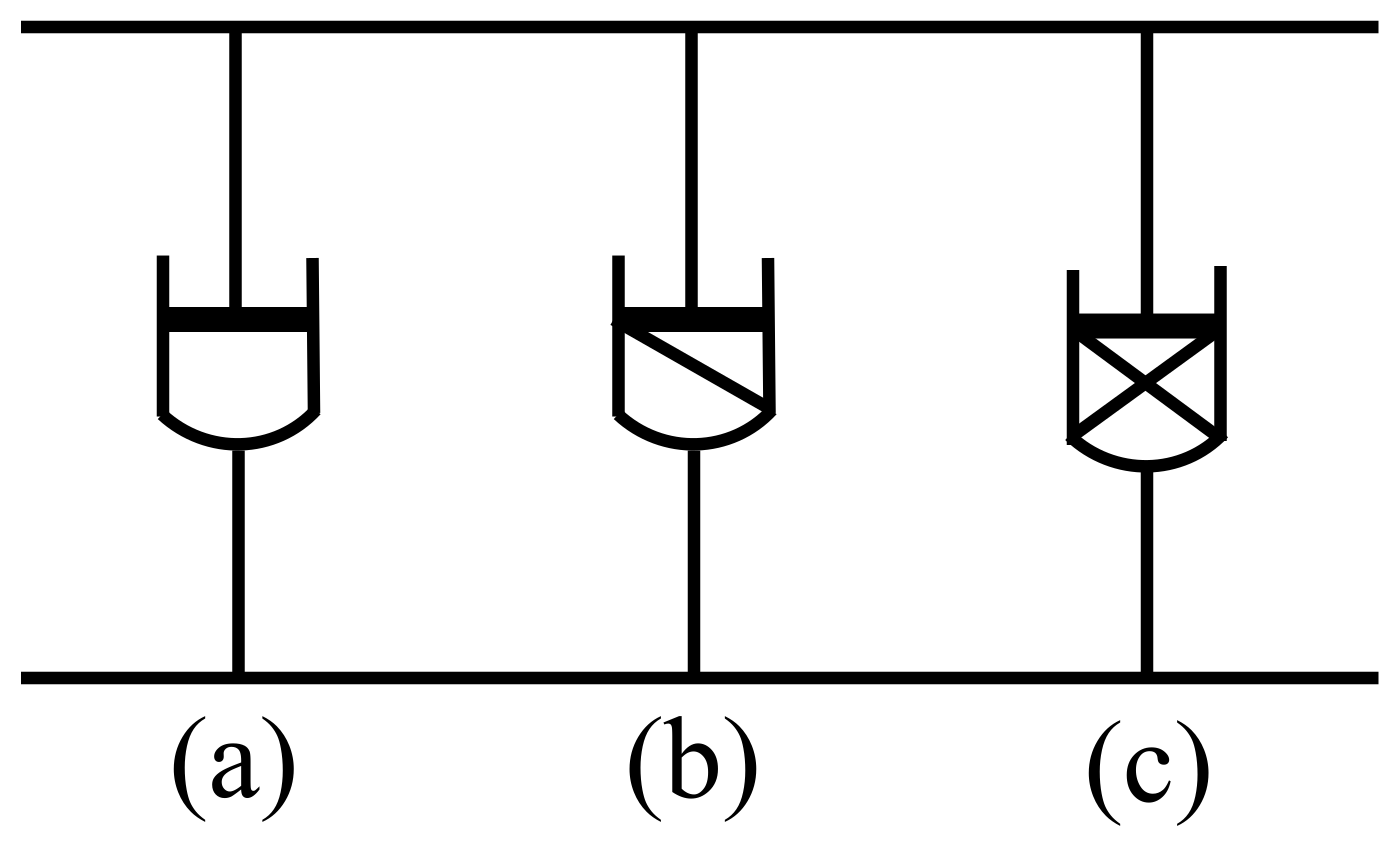
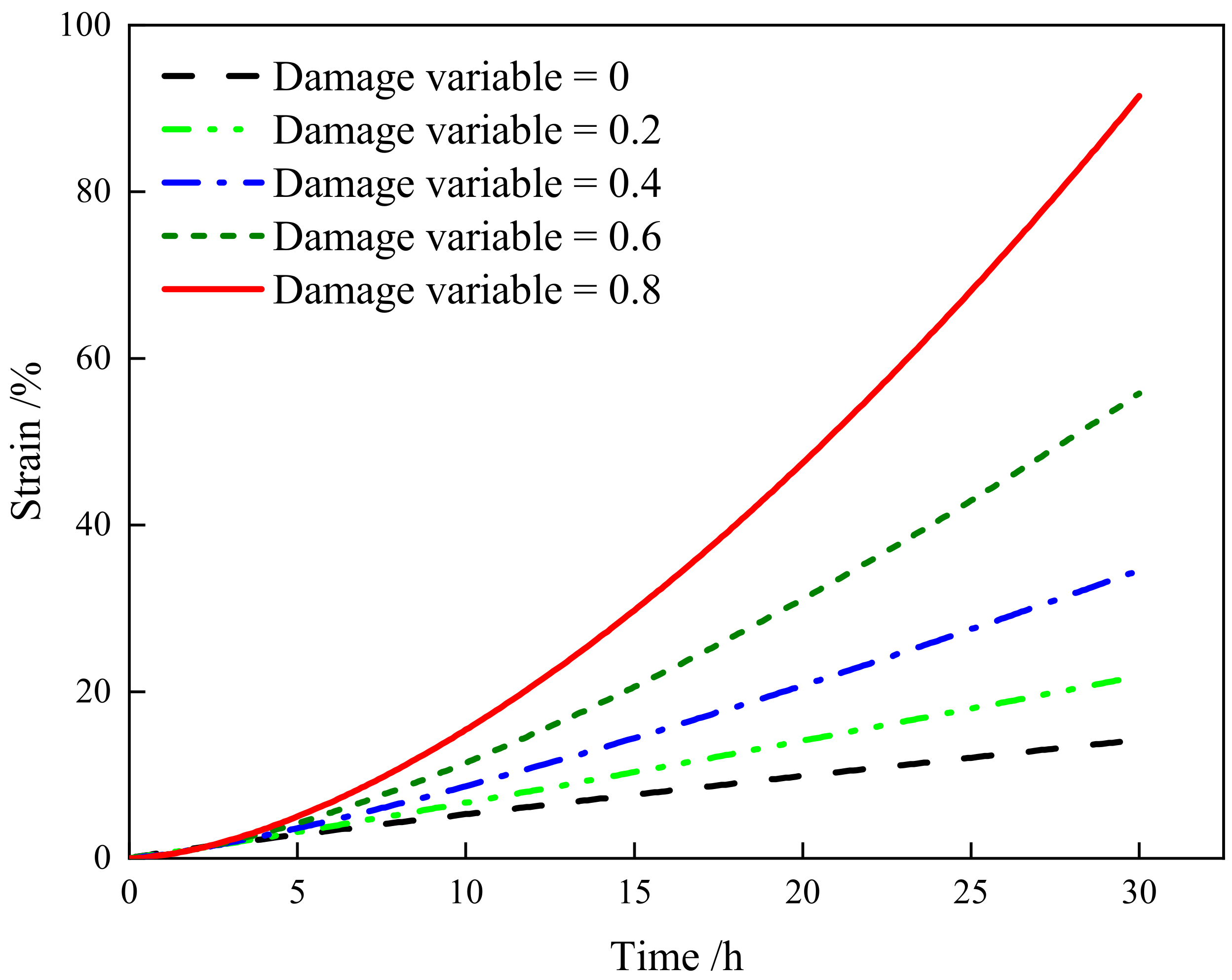
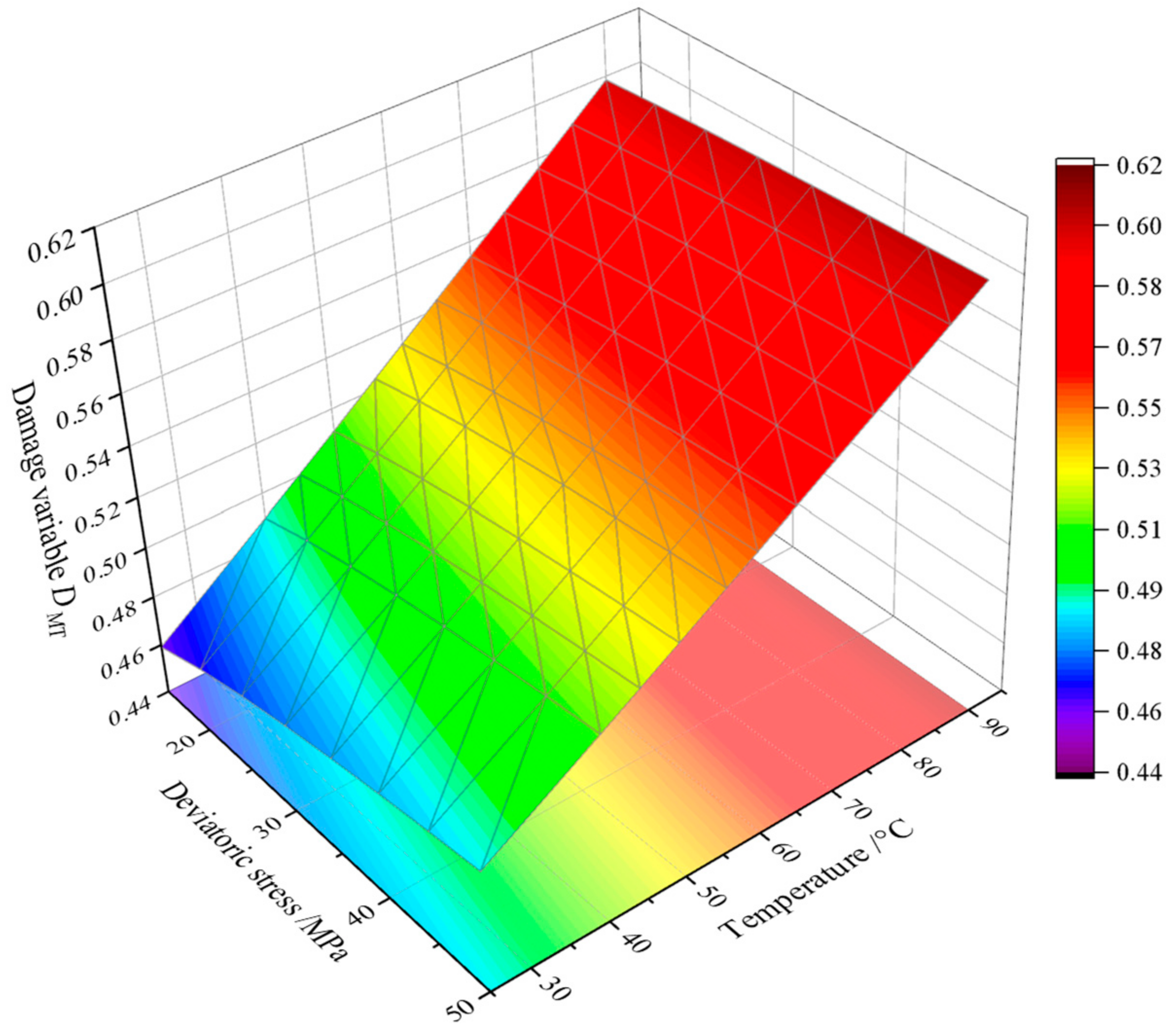

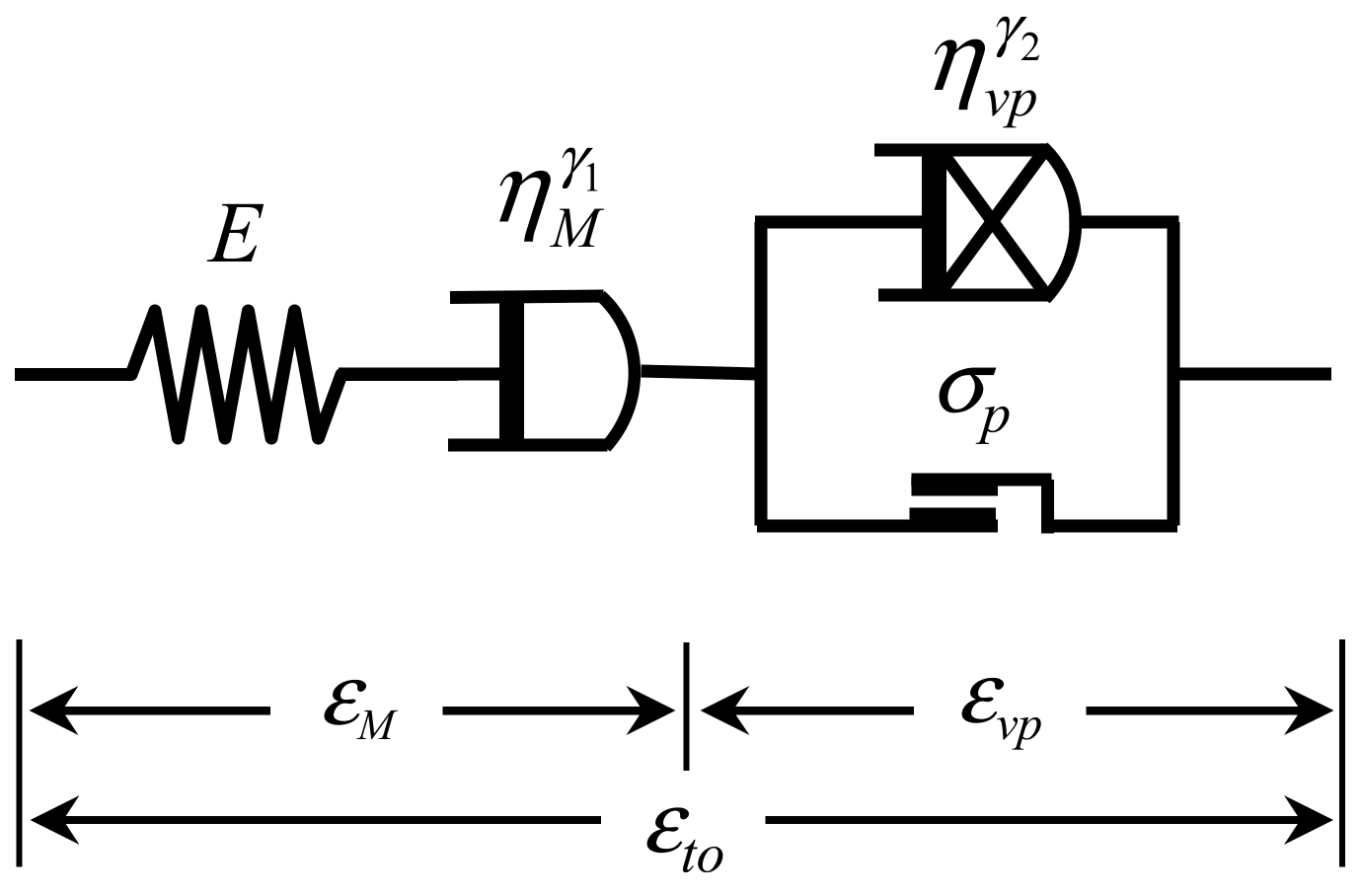
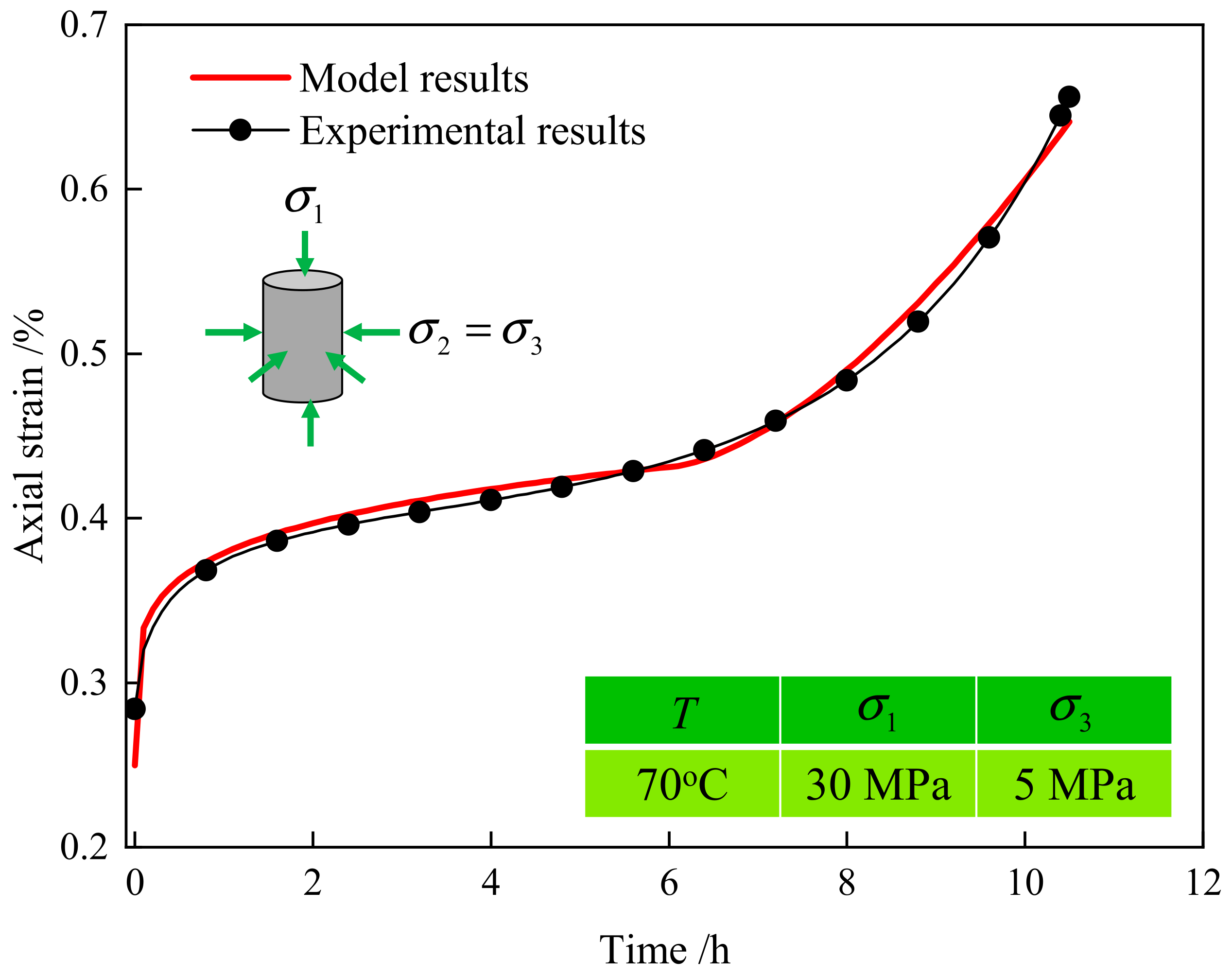
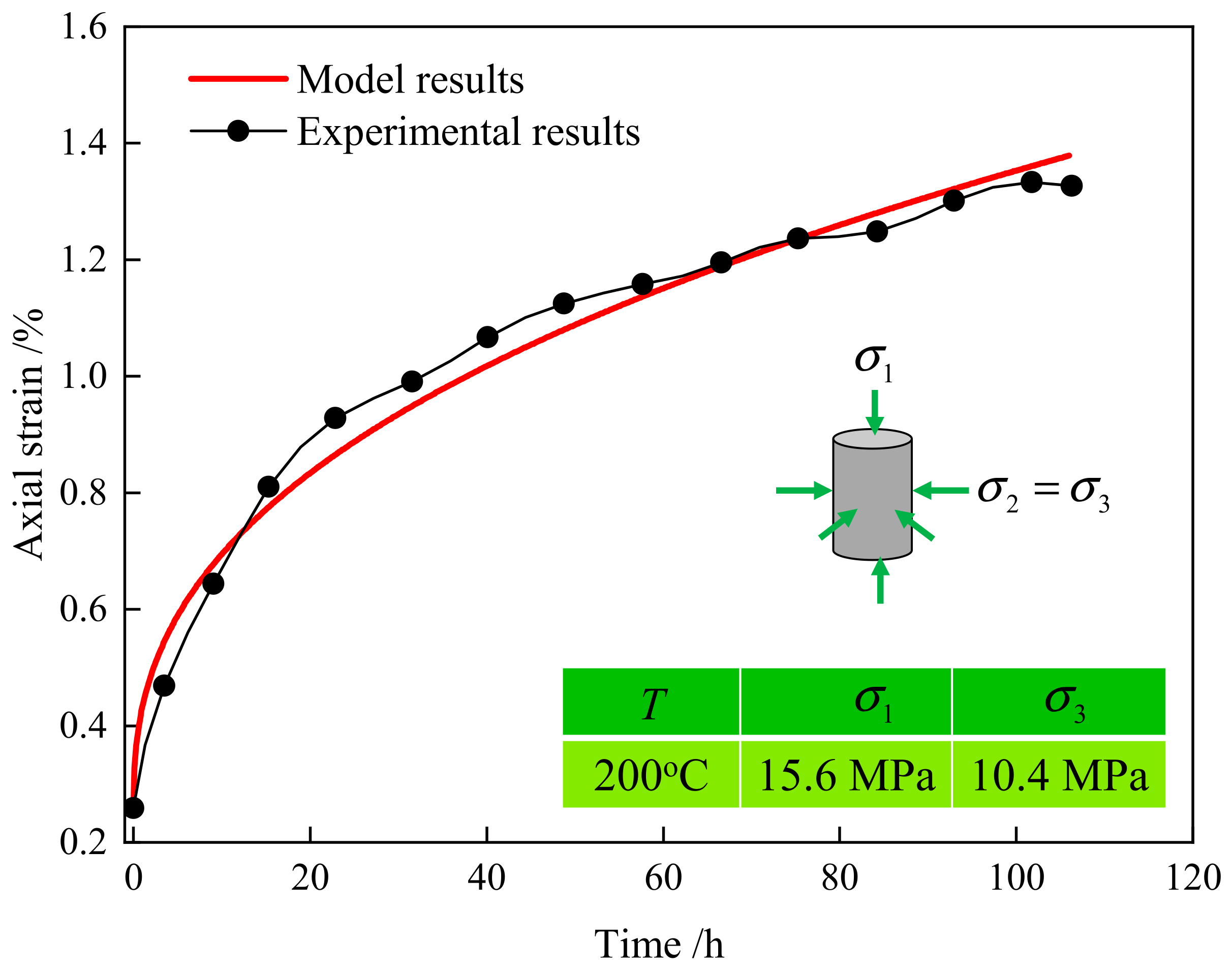
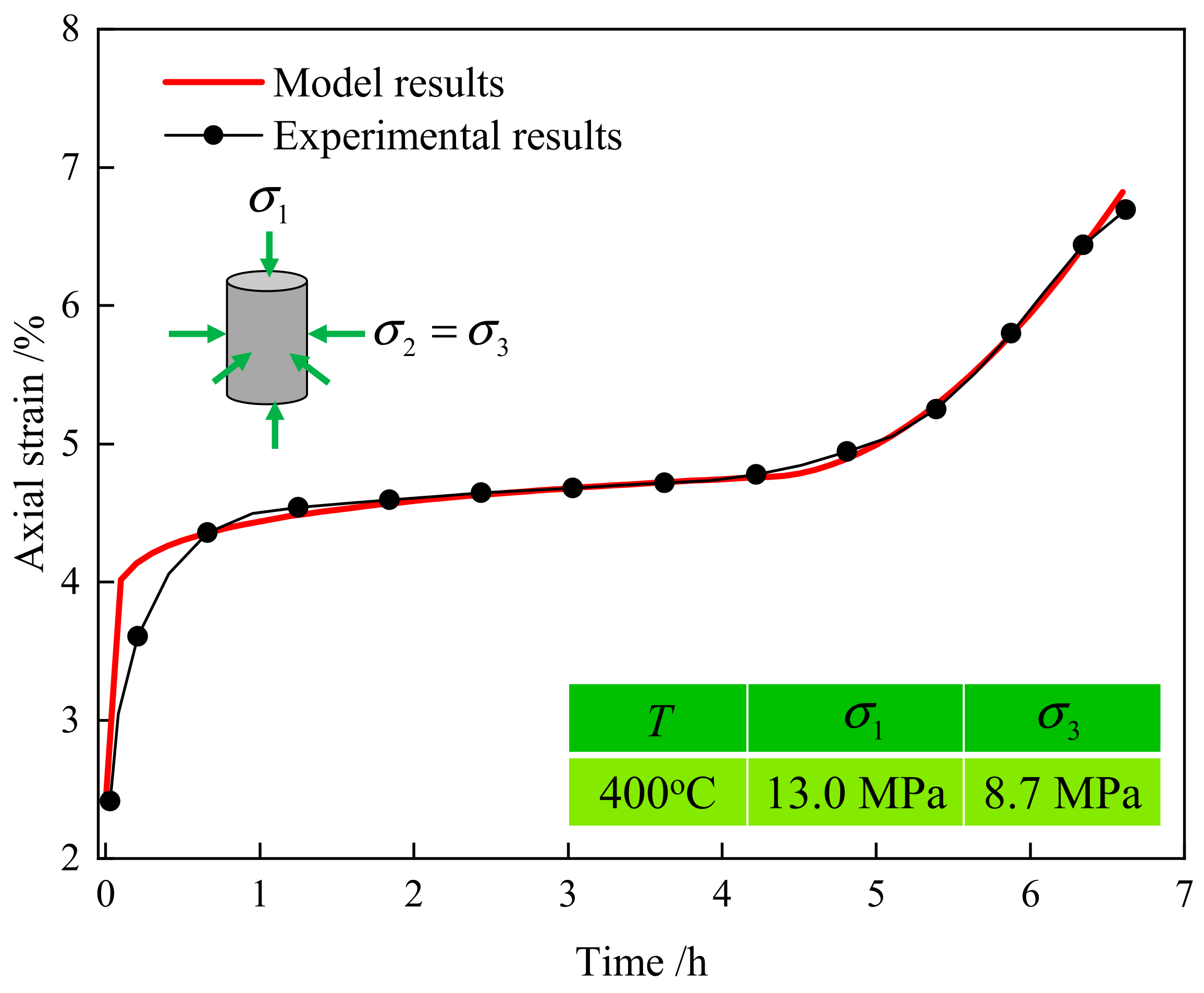

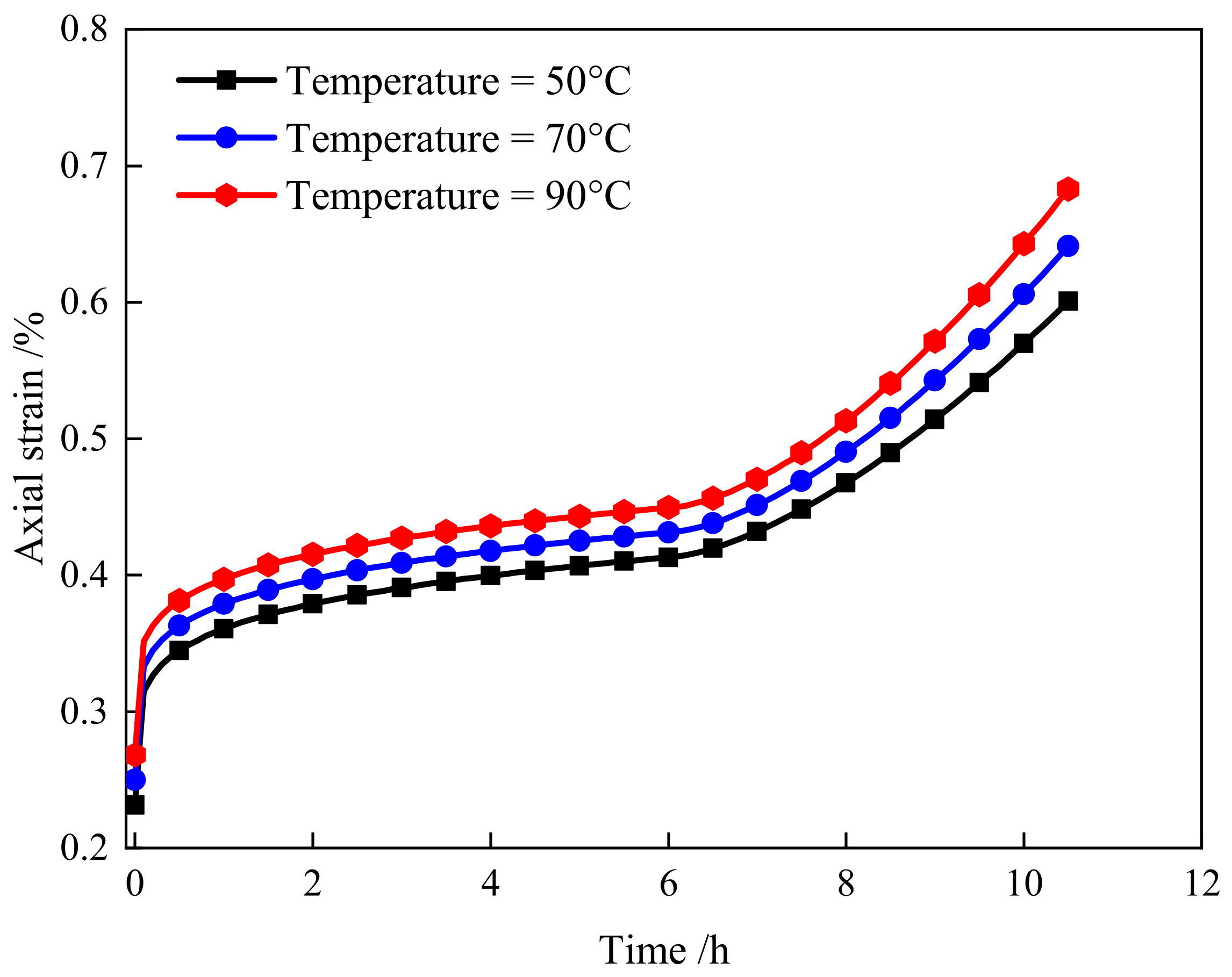

| Parameter | Value | Parameter | Value |
|---|---|---|---|
| Shear modulus (GM, GPa) | 6.50 | Thermal expansion coefficient (αT, K−1) | 1.0 × 10−4 |
| Bulk modulus (KM, GPa) | 5.50 | Temperature effect constant (a) | −1.0 × 10−3 |
| , GPa·hγ1) | 34.00 | Temperature effect constant (b) | 0.03 |
| , GPa·hγ2) | 45.00 | Time effect constant (ω, h−1) | 1.0 × 10−4 |
| Conformable derivative order (γ1) | 0.19 | Cohesion (c, MPa) | 1.50 |
| Conformable derivative order(γ2) | 0.94 | Internal friction angle (φ, °) | 35.56 |
| Temperature/°C | GM/GPa | KM/GPa | /GPa·hγ1 | /GPa·hγ2 | γ1 | γ2 |
|---|---|---|---|---|---|---|
| 200 | 6.49 | 5.51 | 2.50 | 45.00 | 0.40 | 0.94 |
| 400 | 0.80 | 1.00 | 0.70 | 3.10 | 0.10 | 0.92 |
Disclaimer/Publisher’s Note: The statements, opinions and data contained in all publications are solely those of the individual author(s) and contributor(s) and not of MDPI and/or the editor(s). MDPI and/or the editor(s) disclaim responsibility for any injury to people or property resulting from any ideas, methods, instructions or products referred to in the content. |
© 2024 by the authors. Licensee MDPI, Basel, Switzerland. This article is an open access article distributed under the terms and conditions of the Creative Commons Attribution (CC BY) license (https://creativecommons.org/licenses/by/4.0/).
Share and Cite
Zhang, L.; Zhang, C.; Hu, K.; Xie, S.; Jia, W.; Song, L. A Fractional Creep Model for Deep Coal Based on Conformable Derivative Considering Thermo-Mechanical Damage. Processes 2024, 12, 1121. https://doi.org/10.3390/pr12061121
Zhang L, Zhang C, Hu K, Xie S, Jia W, Song L. A Fractional Creep Model for Deep Coal Based on Conformable Derivative Considering Thermo-Mechanical Damage. Processes. 2024; 12(6):1121. https://doi.org/10.3390/pr12061121
Chicago/Turabian StyleZhang, Lei, Chunwang Zhang, Ke Hu, Senlin Xie, Wenhao Jia, and Lei Song. 2024. "A Fractional Creep Model for Deep Coal Based on Conformable Derivative Considering Thermo-Mechanical Damage" Processes 12, no. 6: 1121. https://doi.org/10.3390/pr12061121






